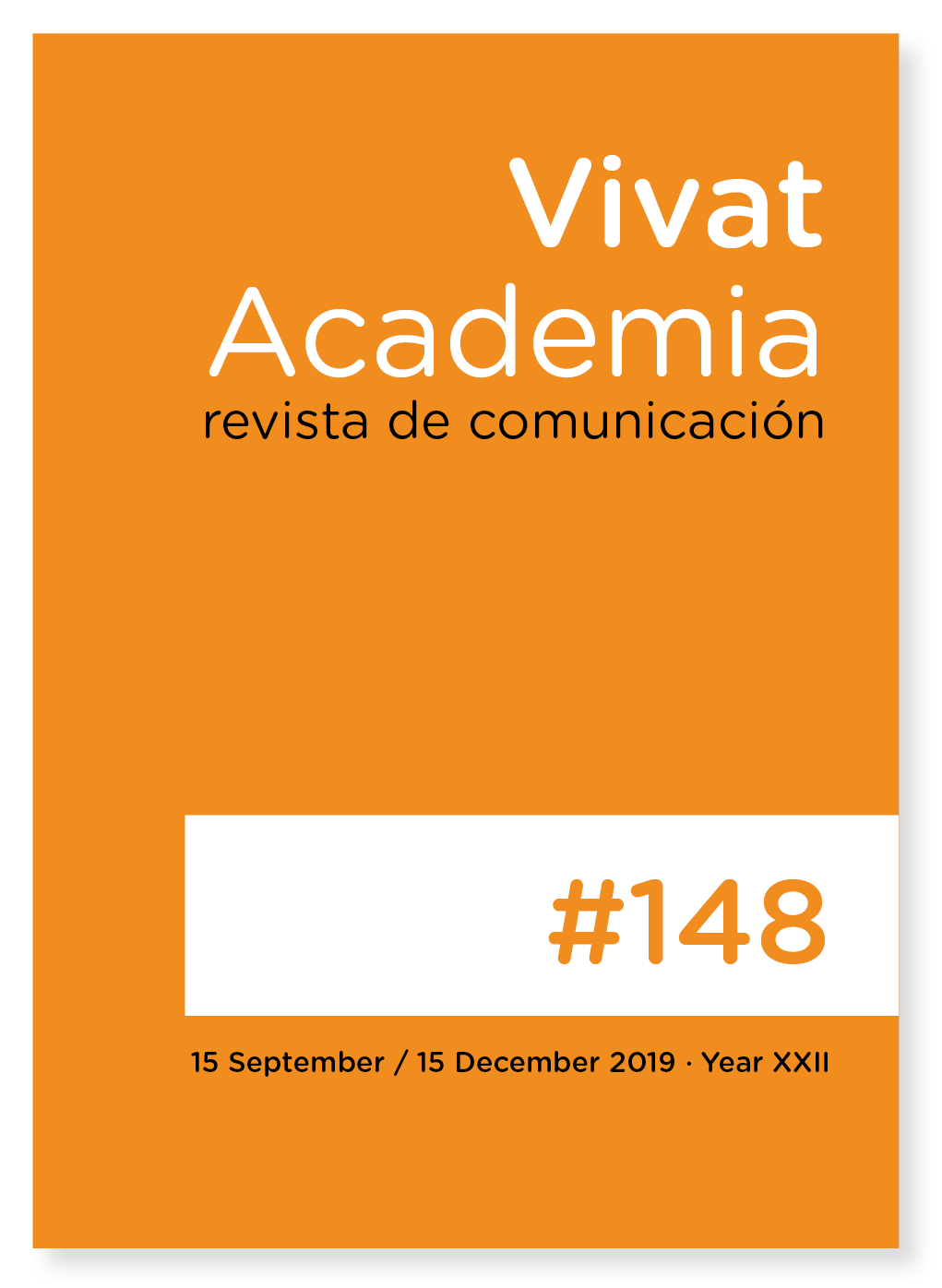The speech referred to in the opinion articles. Analysis of dialogue in the columns of Alfonso Sánchez
Main Article Content
Abstract
Downloads
Article Details
The main author must deliver the letter of transfer of copyright, according to the model provided by Vivat Academia, Revista de comunicación, which declares the transfer of copyright to the journal and make explicit the rights of authors regarding the dissemination and use of the manuscript once published.
Creative Commons Attribution/Non Commercial 4.0 International
References
Amado, A. (2014). Los hechos y los dichos en las noticias: la polifonía del discurso periodístico. Romanica Olomucensia 26(2), 143–156. Recuperado de https://dialnet.unirioja.es/servlet/articulo?codigo=5053281
Arroyas, E. (2009). La objetividad y la función democrática del periodismo. Murcia: Ucam. Recuperado de https://www.academia.edu/2035998/La_objetividad_y_la_funci%C3%B3n_democr%C3%A1tica_del_periodismo
Cantero, V. (2011). El perspectivismo como técnica narrativa en los artículos de costumbres de Larra. La Laguna. Revista de Filología, 29, 21-36. Recuperado de https://dialnet.unirioja.es/servlet/articulo?codigo=3662466
Aristóteles (2005).Retórica. Madrid: Alianza Editorial.
Armañanzas, E. y Díaz, J. (1996). Géneros de opinión. Bilbao: Eunsa.
Arroyas Langa, E. y Berná Sicilia, C. (2015).La persuasión periodística. Barcelona: UOC.
Bajtin, M. (1989). Teoría y estética de la novela. Madrid: Taurus.
Burguet, F. (2008). Las trampas de los periodistas. Barcelona: Trípodos.
Casals Carro, M. J. (2000). La columna personal: de esos embusteros días del ego inmarchitable. Estudios sobre el mensaje periodístico, 6, 31-51.
Chillón, A. (2014). La palabra facticia. Literatura, periodismo y comunicación. Barcelona: Universidad Autónoma de Barcelona.
Compagnon, A. (2015). El demonio de la teoría. Literatura y sentido común. Barcelona: Acantilado.
Fernández Lagunilla, M. y Pendones, C. (1993). Recursos polifónicos del narrador en el discurso periodístico. Revista de Filología Románica, 10, 285-294. https://core.ac.uk/download/pdf/38841629.pdf
Forneas Fernández, M. C. (2005). El artículo de costumbres: crónica, crítica, literatura y periodismo. Estudios sobre el mensaje periodístico, 5, 293-308.
García Álvarez, M. F. (2007).Las columnas de autor: Retórica y… ¿Diálogo? Caso práctico: La presencia del “otro” en el columnismo de Rosa Montero. Estudios sobre el mensaje periodístico, 13, 399-417.
Genette, G. (1989). Figuras III. Barcelona: Lumen.
Jakobson, R. (1984). Ensayos de lingüística general. Barcelona: Ariel.
Jameson, F. (1980). La cárcel del lenguaje: perspectiva crítica del estructuralismo y del formalismo ruso. Barcelona: Ariel.
León Gross, T. (2008). El artículo literario: Manuel Alcántara. Málaga, España: Servicio de Publicaciones de la Universidad de Málaga con la colaboración de la Fundación Manuel Alcántara.
López Pan, F. (1995). La columna como género periodístico. Pamplona: Eunsa.
Martín Vivaldi, G. (1993). Géneros periodísticos. Madrid: Paraninfo.
Molero De La Iglesia, A. (2004). Didáctica del texto narrativo. Estudio y análisis del discurso. Madrid: UNED.
Moreno Espinosa, P. (2002). Géneros para la persuasión en prensa: los artículos de opinión del diario El País. Revista Latina de Comunicación Social, 5(46). Recuperado de http://www.redalyc.org/articulo.oa?id=81954612
Peñas Ruiz, A. (2014). El artículo de costumbres en España (1830-1850). Vigo. Academia del Hispanismo.
Perelman CH. y Olbrechts-Tyteca, L. (1989). Tratado de la argumentación. La nueva retórica. Madrid: Gredos.
Reyes, G. (1984). Polifonía Textual. La citación en el relato literario. Madrid: Gredos.
Santamaría Suárez, L. y Casals Carro, M. J. (2000): La opinión periodística. Argumentos y géneros para la persuasión. España: Fragua.
Spang, K. (2009). El arte de la literatura. Otra teoría de la literatura. Pamplona: Eunsa.





